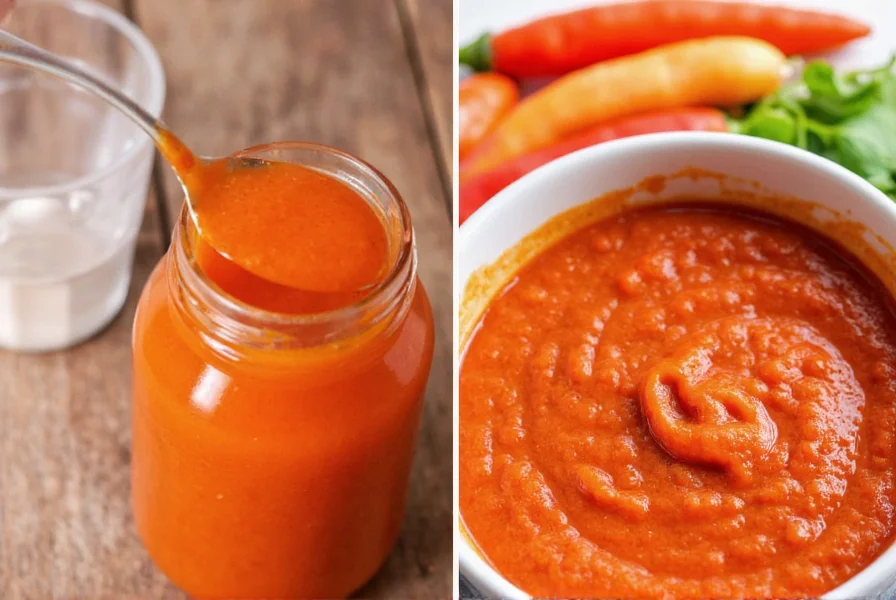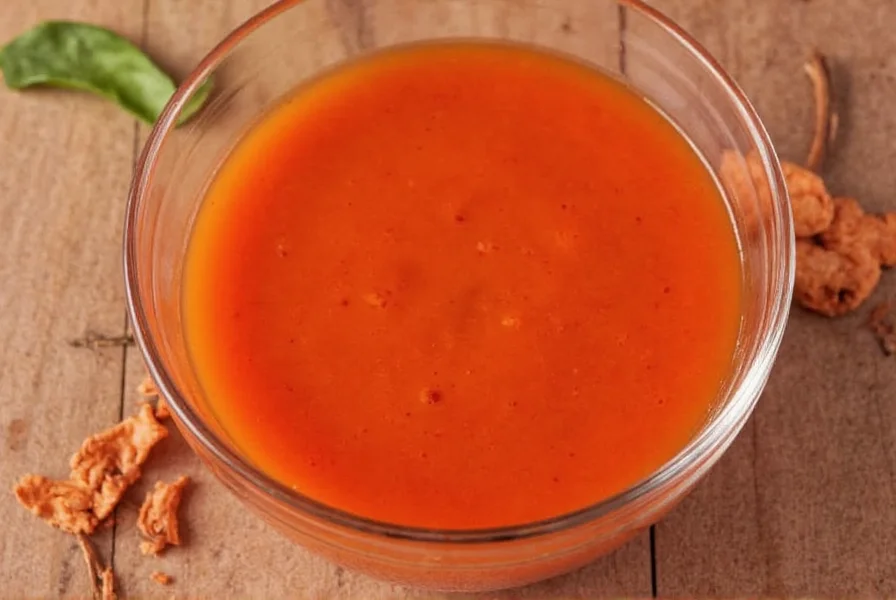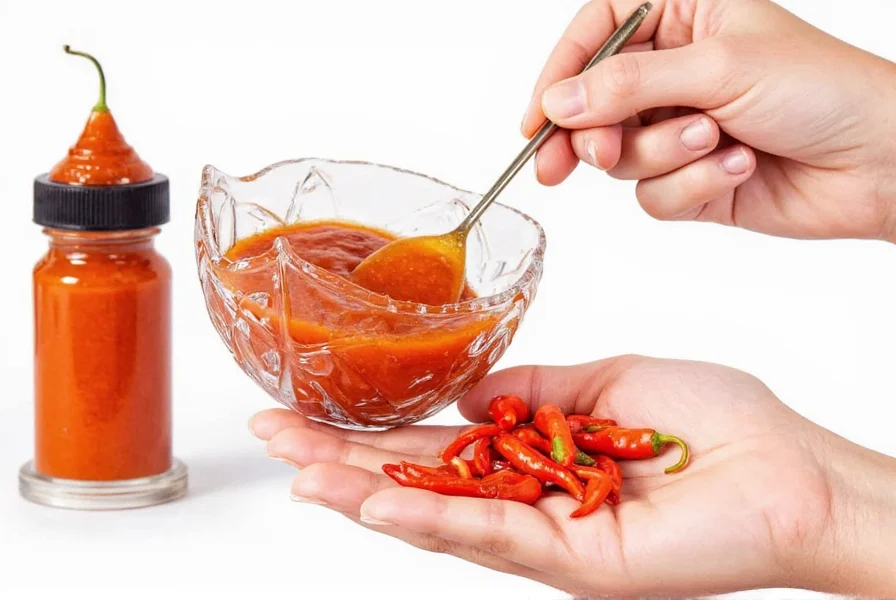Cayenne pepper sauce stands as one of the most versatile condiments in culinary traditions worldwide. Unlike complex hot sauce blends, authentic cayenne pepper sauce maintains simplicity with minimal ingredients while delivering distinctive heat and flavor. This straightforward formulation makes it particularly valuable for home cooks seeking consistent results without competing flavor profiles.
What Exactly Is Cayenne Pepper Sauce?
True cayenne pepper sauce consists of just three core components: fresh or dried cayenne peppers, vinegar, and salt. The cayenne peppers (Capsicum annuum) provide the signature heat and vibrant red color, while vinegar acts as both preservative and flavor enhancer, extracting the peppers' essential oils. Salt serves dual purposes—enhancing flavor and preventing bacterial growth.
Commercial varieties sometimes include additional ingredients like garlic, citrus juice, or xanthan gum as thickener, but traditional preparations remain remarkably simple. The sauce typically ranges from thin and vinegar-forward to slightly thicker preparations depending on whether fresh peppers or dried cayenne powder forms the base.
Understanding Heat Level and Flavor Profile
Cayenne pepper sauce registers between 30,000 and 50,000 Scoville Heat Units (SHU), placing it significantly hotter than jalapeño-based sauces (2,500-8,000 SHU) but milder than habanero sauces (100,000-350,000 SHU). This moderate heat level makes it accessible to many heat enthusiasts while still providing noticeable warmth.
| Hot Sauce Type | Scoville Range | Flavor Characteristics |
|---|---|---|
| Cayenne Pepper Sauce | 30,000-50,000 SHU | Sharp, citrusy, clean heat |
| Sriracha | 1,000-2,200 SHU | Sweet, garlicky, mild heat |
| Habanero Sauce | 100,000-350,000 SHU | Fruity, floral, intense heat |
| Tabasco | 2,500-5,000 SHU | Vinegary, fermented, moderate heat |
The flavor profile distinguishes cayenne pepper sauce from other hot sauces. While Tabasco features fermented red peppers and sriracha incorporates garlic and sugar, pure cayenne sauce delivers a cleaner, more direct pepper experience with subtle citrus notes. This makes it particularly valuable when you want heat without competing flavors altering your dish.
Practical Culinary Applications
Cayenne pepper sauce shines in applications where you want to add heat without introducing additional flavors. Professional chefs particularly value it for:
- Breakfast dishes: A few drops transform scrambled eggs, omelets, or avocado toast
- Soups and stews: Adds depth to tomato-based soups, bean dishes, and chili
- Marinades: Combines well with citrus and olive oil for chicken or fish
- Dips and dressings: Enhances ranch, aioli, or vinaigrettes
- Roasted vegetables: Toss with potatoes, cauliflower, or Brussels sprouts before roasting
Unlike thicker sauces like sriracha, cayenne pepper sauce distributes evenly through liquids, making it ideal for soups, sauces, and braises where consistent heat distribution matters. The vinegar content also helps balance rich or fatty dishes, cutting through heaviness in foods like macaroni and cheese or creamy pasta dishes.

Health Benefits Supported by Research
The primary active compound in cayenne pepper sauce, capsaicin, has been studied for several potential health benefits. Research indicates capsaicin may:
- Temporarily boost metabolism by approximately 50 calories per day according to a Physiology & Behavior study
- Reduce appetite when consumed before meals, potentially aiding weight management
- Provide temporary pain relief when applied topically for conditions like arthritis
- Support cardiovascular health through improved blood vessel function
- Exhibit antioxidant properties that may reduce inflammation
It's important to note that these benefits come from moderate consumption as part of a balanced diet. The vinegar base also contributes potential digestive benefits, though individuals with acid sensitivity should consume cautiously.
Simple Homemade Cayenne Pepper Sauce Recipe
Creating authentic cayenne pepper sauce at home requires minimal equipment and ingredients. This basic recipe yields approximately 16 ounces:
- 4 ounces (about 1 cup) dried cayenne peppers, stems removed
- 1½ cups distilled white vinegar
- 1½ teaspoons salt
- 1 clove garlic (optional)
- ½ teaspoon sugar (optional)
- Place dried peppers in a heatproof bowl and cover with boiling water. Soak for 20 minutes until softened.
- Drain peppers, reserving ½ cup soaking liquid.
- Combine softened peppers, vinegar, salt, and optional ingredients in a blender.
- Blend until completely smooth (2-3 minutes).
- Pour mixture into a saucepan and simmer gently for 10 minutes.
- Cool slightly, then strain through a fine-mesh sieve for smoother texture (optional).
- Pour into sterilized glass bottles and store in refrigerator.
This homemade cayenne pepper sauce will keep for up to 6 months refrigerated. For variation, try adding citrus zest, different vinegars (apple cider or rice vinegar), or smoked peppers for complexity while maintaining the essential cayenne character.

Storage and Shelf Life Considerations
Proper storage significantly impacts both safety and flavor preservation. Commercial cayenne pepper sauce typically remains safe for 6-12 months unopened, while homemade versions should be refrigerated immediately and consumed within 6 months.
Always use clean utensils when handling sauce to prevent contamination. Discard if you notice:
- Mold growth (any visible fuzz or discoloration)
- Off smells (sour, fermented, or unpleasant odors)
- Bubbling or excessive fizzing when opening
- Significant separation that doesn't recombine with shaking
The high acidity from vinegar creates an environment hostile to most bacteria, but proper storage remains essential for both safety and maintaining optimal flavor.
Frequently Asked Questions
What's the difference between cayenne pepper sauce and hot sauce?
Cayenne pepper sauce specifically uses cayenne peppers as the primary ingredient, resulting in a consistent heat level (30,000-50,000 SHU) and clean flavor. Hot sauce is a broader category that includes any sauce made from chili peppers, which can vary widely in ingredients, heat level, and flavor profile.
Can I substitute cayenne pepper for cayenne pepper sauce?
Yes, but with adjustments. Use ⅛ teaspoon cayenne powder for every teaspoon of cayenne pepper sauce, then add ¾ teaspoon vinegar per teaspoon of sauce to replicate the liquid component. This substitution works well in cooked dishes but may not distribute as evenly in cold preparations.
Why does my homemade cayenne pepper sauce separate?
Separation occurs because the oil from the peppers naturally rises to the top. This is normal and doesn't indicate spoilage. Simply shake the bottle well before each use. For a more stable emulsion, blend the sauce longer or add a small amount of xanthan gum (⅛ teaspoon per cup).
Is cayenne pepper sauce good for weight loss?
Research suggests capsaicin in cayenne pepper may temporarily boost metabolism by about 50 calories daily and reduce appetite. While not a weight loss solution on its own, incorporating cayenne pepper sauce into a balanced diet may provide modest supportive benefits when combined with healthy eating and exercise.
How can I reduce the heat of cayenne pepper sauce?
To mellow the heat, add acid (lemon juice or additional vinegar), sweetness (honey or sugar), or fat (olive oil or yogurt). For cooking applications, introduce the sauce early in the cooking process as heat diminishes over time. You can also dilute with broth, tomato sauce, or coconut milk depending on the dish.











 浙公网安备
33010002000092号
浙公网安备
33010002000092号 浙B2-20120091-4
浙B2-20120091-4